master test#
Hint
Spatial capture-recapture (SCR) / Spatially explicit capture recapture (SECR): The SECR (or SCR) method is used to estimate the density of marked populations; an extension of traditional capture-recapture (CR; Karanth, 1995; Karanth & Nichols, 1998) models (Karanth, 1995; Karanth & Nichols, 1998) that explicitly accounts for camera location and animal movement (Burgar et al., 2018). SECR models use spatially referenced individual capture histories to infer where animals’ home range centres are, assuming that detection probability decreases with increasing distance between cameras and home range centres (Clarke et al., 2023). SECR models can be implemented using different statistical frameworks, including Bayesian estimation (Royle and Young, 2008; Morin et al., 2022).
replace me with text
Assumptions, Pros, Cons
Demographic closure (i.e., no births or deaths) (Wearn & Glover-Kapfer, 2017)
Detection probability of different individuals is equal (Wearn & Glover-Kapfer, 2017)
or, for SECR, individuals have equal Detection probability at a given distance from the centre of their home range (Wearn & Glover-Kapfer, 2017)
Detections of different individuals are independent (Wearn & Glover-Kapfer, 2017)
Behaviour is unaffected by cameras and marking (Wearn & Glover-Kapfer, 2017)
Individuals do not lose marks (Wearn & Glover-Kapfer, 2017)
Individuals are not misidentified (Wearn & Glover-Kapfer, 2017)
Surveys are independent (Wearn & Glover-Kapfer, 2017)
For conventional models, geographic closure (i.e., no immigration or emigration) (Wearn & Glover-Kapfer, 2017)
Spatially explicit models have further assumptions about animal movement (Wearn & Glover-Kapfer, 2017; Rowcliffe et al., 2008; Royle et al., 2009; O’Brien et al., 2011); these include:
Home ranges are stable (Wearn & Glover-Kapfer, 2017)
Movement is unaffected by the cameras (Wearn & Glover-Kapfer, 2017)
Camera locations are randomly placed with respect to the distribution and orientation of home ranges (Wearn & Glover-Kapfer, 2017)
Distribution of home range centres follows a defined distribution (Poisson, or other, e.g., negative binomial) (Wearn & Glover-Kapfer, 2017)
Produces direct estimates of density or population size for explicit spatial regions (Chandler & Royle, 2013)
Allows researchers to mark a subset of the population / to take advantage of natural markings (Wearn & Glover-Kapfer, 2017)
Estimates are fully comparable across space, time, species and studies (Wearn & Glover-Kapfer, 2017)
density estimates obtained in a single model, fully incorporate spatial information of locations and individuals (Wearn & Glover-Kapfer, 2017)
Both likelihood-based and Bayesian versions of the model have been implemented in relatively easy-to-use software DENSITY and SPACECAP, respectively, as well as associated R packages) (Wearn & Glover-Kapfer, 2017)
Flexibility in study design (e.g., ‘holes’ in the trapping grid) (Wearn & Glover-Kapfer, 2017)
Open SECR (Efford, 2004; Borchers & Efford, 2008; Royle & Young, 2008; Royle et al., 2009) models exist that allow for estimation of recruitment and survival rates (Wearn & Glover-Kapfer, 2017)
Avoid ad-hoc definitions of study area and edge effects (Doran-Myers, 2018)
SECR (Efford, 2004; Borchers & Efford, 2008; Royle & Young, 2008; Royle et al., 2009) accounts for variation in individual Detection probability; can produce spatial variation in density; SECR (Efford, 2004; Borchers & Efford, 2008; Royle & Young, 2008; Royle et al., 2009) more sensitive to detect moderate-to-major populations changes (+/-20-80%) (Royle & Young, 2008; Royle et al., 2009)
Requires that individuals are identifiable (Wearn & Glover-Kapfer, 2017)
Requires that a minimum number of individuals are trapped (each recaptured multiple times ideally) (Wearn & Glover-Kapfer, 2017)
Requires that each individual is captured at a number of camera locations (Wearn & Glover-Kapfer, 2017)
Multiple cameras per station may be required to identify individuals; difficult to implement at large spatial scales as it requires a high density of cameras (Morin et al., 2022)
May not be precise enough for long-term monitoring (Green et al., 2020)
Cameras must be close enough that animals are detected at multiple camera locations (Wearn & Glover-Kapfer, 2017) (may be challenging to implement at large scales as many cameras are needed)’ (Chandler & Royle, 2013)
½ MMDM (Mean Maximum Distance Moved) will usually lead to an underestimation of home range size and thus overestimation of density (Parmenter et al., 2003; Noss et al., 2012; Wearn & Glover-Kapfer, 2017)
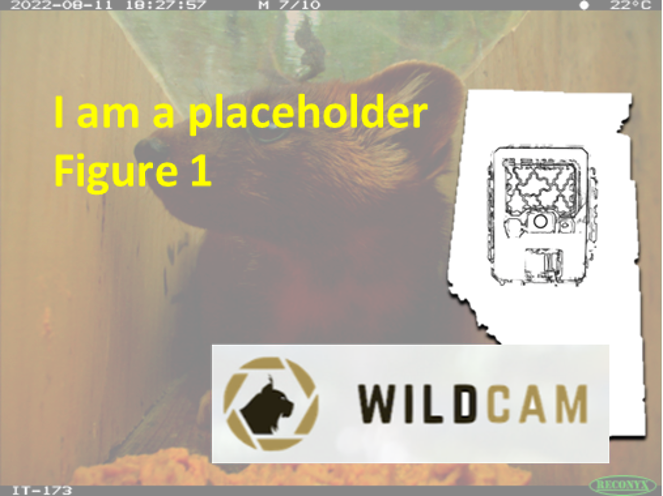
figure1_caption
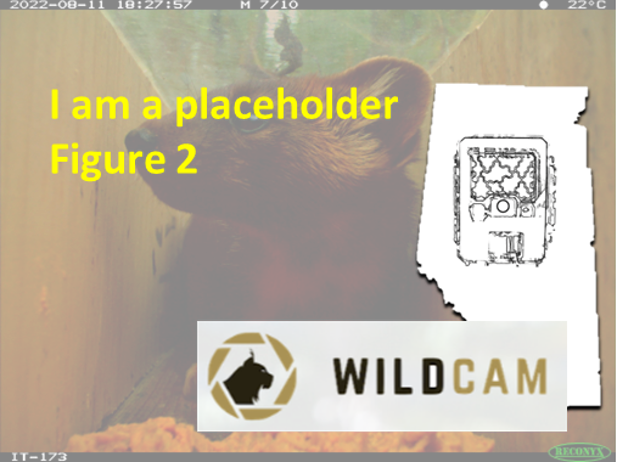
figure2_caption
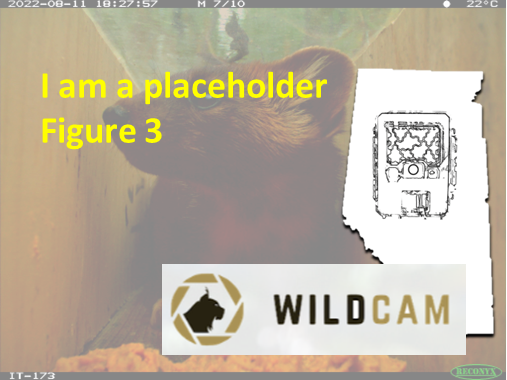
figure3_caption
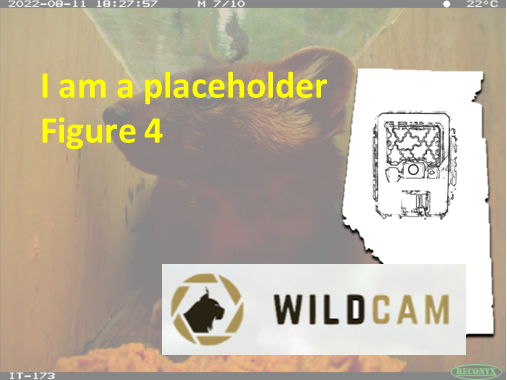
figure4_caption
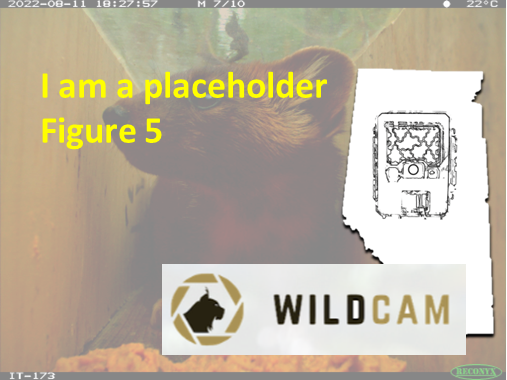
figure5_caption
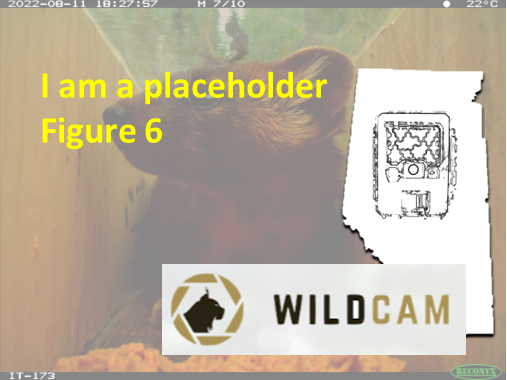
figure6_caption
vid1_caption
vid2_caption
vid3_caption
vid4_caption
vid5_caption
vid6_caption
shiny_name
shiny_caption
shiny_name2
shiny_caption2
Type |
Name |
Note |
URL |
Reference |
|---|---|---|---|---|
rJAGS/R code |
mfidino/multi-state-occupancy-models |
Fidino, M. (2021a) multi-state-occupancy-models. https://github.com/mfidino/integrated-occupancy-model |
||
JAGS/R code |
A gentle introduction to an integrated occupancy model that combines presence-only and detection/non-detection data, and how to fit it in JAGS; |
https://masonfidino.com/bayesian_integrated_model/; |
Fidino, M. (2021b) A gentle introduction to an integrated occupancy model that combines presence-only and detection/non-detection data, and how to fit it in JAGS https://masonfidino.com/bayesian_integrated_model ; Fidino, M. (2021c) integrated-occupancy-models https://github.com/mfidino/integrated-occupancy-model |
|
JAGS code/Tutorial |
So, you don’t have enough data to fit a dynamic occupancy model? An introduction to auto-logistic occupancy models; |
|||
https://masonfidino.com/autologistic_occupancy_model/; |
Fidino, M. (2021d) So, you don’t have enough data to fit a dynamic occupancy model? An introduction to auto-logistic occupancy models. https://masonfidino.com/autologistic_occupancy_model ; Fidino, M. (2021e) auto-logistic-occupancy. https://github.com/mfidino/auto-logistic-occupancy |
|||
R package |
Package “autoOcc” |
An R package for fitting autologistic occupancy models |
Fidino, M. (2023) autoOcc: An R package for fitting autologistic occupancy models. R package version 0.1.1, https://github.com/mfidino/autoOcc |
|
R code |
mfidino/periodicity |
Using Fourier series to predict periodic patterns in dynamic occupancy models |
Fidino, M., & Magle, S. B. (2017). Using Fourier series to predict periodic patterns in dynamic occupancy models. Ecosphere,8(9) , e01944. https://doi.org/10.1002/ecs2.1944 |
|
Spreadsheet |
OccPower.xlsx |
Spreadsheet to compute power to detect difference in 2 independent occupancy estimates using asymptotic approximations described in Guillera-Arroita et. al. (2012). |
Guillera-Arroita, G., & Lahoz-Monfort, J. J. (2012). Designing studies to detect differences in species occupancy: Power analysis under imperfect detection. Methods in Ecology and Evolution, 3(5), 860-869. https://doi.org/10.1111/j.2041-210X.2012.00225.x |
|
R code/Tutorial |
“An Introduction to Camera Trap Data Management and Analysis in R > Chapter 11 Occupancy” |
https://bookdown.org/c_w_beirne/wildCo-Data-Analysis/occupancy.html |
WildCo Lab (2021c). Chapter 11 Occupancy. https://bookdown.org/c_w_beirne/wildCo-Data-Analysis/occupancy.html |
|
Program |
Program “PRESENCE” |
“Relatively simple, but comprehensive, software dedicated to occupancy estimation. Linux version available. Can also be used for occupancy-based species richness estimation.” (Wearn & Glover-Kapfer, 2017) |
Software: <www.mbr-pwrc.usgs.gov/software/presence.html>; |
Hines, J. E. (2006). PRESENCE - Software to estimate patch occupancy and related parameters. https://www.mbr-pwrc.usgs.gov/software/presence.html. |
R package |
Package “RPresence” |
“The R counterpart to Presence. Cross-platform (Windows, Mac and Linux).” (Wearn & Glover-Kapfer, 2017) |
Hines, J. E. (2006). PRESENCE - Software to estimate patch occupancy and related parameters. https://www.mbr-pwrc.usgs.gov/software/presence.html. |
|
R package |
R package “unmarked” |
“Implements a wide variety of occupancy and count-based abundance models (the latter are mostly not appropriate for camera-trapping). Actively being developed and supported by a community of users. Cross-platform (Windows, Mac and Linux).” (Wearn & Glover-Kapfer, 2017) |
https://cran.r-project.org/web/packages/unmarked/index.html; |
Fiske, I. & Chandler, R. (2011). unmarked: An R Package for Fitting Hierarchical Models of Wildlife Occurrence and Abundance. Journal of Statistical Software, 43(10), 1-23. https://www.jstatsoft.org/v43/i10 ; Kellner, K. F., Smith, A. D., Royle, J. A., Kery, M, Belant, J. L., & Chandler, R. B. (2023). The unmarked R package: Twelve years of advances in occurrence and abundance modelling in ecology. Methods in Ecology and Evolution, 14 (6), 1408-1415. https://www.jstatsoft.org/v43/i10/ |
R code/Tutorial |
Multi-season Occupancy Models |
McNeil, D. (n.d.). Multi-season Occupancy Models. https://darinjmcneil.weebly.com/multi-season-occupancy.html |
||
R package |
Package “detect” |
R package for analyzing wildlife data with detection error |
Solymos, P. (2023). Package ‘detect’: Analyzing Wildlife Data with Detection Error. R package version 0.4-6. https://cran.r-project.org/web/packages/detect/detect.pdf |
|
R code/Tutorial |
Occupancy Modeling |
Easy to follow explanation of occupancy models with accompanying tutorial and R code. |
||
Tutorial |
occupancyTuts: Occupancy modelling tutorials with RPresence |
Occupancy modelling tutorials with RPresence |
Donovan, T., Hines, J., & MacKenzie, D. (2024). OCCUPANCYTUTS: Occupancy modelling tutorials with RPRESENCE. Methods in Ecology and Evolution, 15(3), 477-483. https://doi.org/10.1111/2041-210X.14285 |
|
R code/Tutorial |
Implicit dynamics occupancy models in R |
Implicit dynamics occupancy models with the R package RPresence. These models estimate occupancy probability when it changes through time without estimating colonization and extinction parameters. |
https://jamesepaterson.github.io/jamespatersonblog/2024-06-02_implicitdynamicsoccupancy.html |
Paterson, J. (2024). Implicit dynamics occupancy models in R. https://jamesepaterson.github.io/jamespatersonblog/2024-06-02_implicitdynamicsoccupancy.html |
Tutorial |
Using the mgcvmgcv package to create a generalized additive occupancy model in R |
https://masonfidino.com/generalized_additive_occupancy_model |
Fidino, M. (2021F) Using the mgcvmgcv package to create a generalized additive occupancy model in R. https://masonfidino.com/generalized_additive_occupancy_model |
|
R Shiny app |
Bias in single-season occupancy models |
“Compute the relative bias (in %) in the maximum-likelihood estimator of the occupancy probability ψ in a single-season (aka static) occupancy model with constant parameters fitted with the package ‘unmarked’.” |
Repo: oliviergimenez/bias_occupancy_flexdashboard |
Gimenez, O. (2020a). Bias in single-season occupancy models. https://ecologicalstatistics.shinyapps.io/bias_occupancy; |
R code |
Bias in occupancy estimate for a static model |
“R code to calculate bias in occupancy estimate as a function of the detection probability given various levels of occupancy probability, various number of sites and surveys.” |
Gimenez, O. (2020b). Bias in occupancy estimate for a static model. https://github.com/oliviergimenez/bias_occupancy |
|
R code/ Presentation |
Species Distribution Modelling |
‘Vernon Visser provided a brief introduction to SDMs. Below you can replace the lecture slides and R script from this seminar. Provided in these materials is: |
Type |
Name |
Note |
URL |
Reference |
|---|---|---|---|---|
rJAGS/R code |
mfidino/multi-state-occupancy-models |
Fidino, M. (2021a) multi-state-occupancy-models. https://github.com/mfidino/integrated-occupancy-model |
||
JAGS/R code |
A gentle introduction to an integrated occupancy model that combines presence-only and detection/non-detection data, and how to fit it in JAGS; |
https://masonfidino.com/bayesian_integrated_model/; |
Fidino, M. (2021b) A gentle introduction to an integrated occupancy model that combines presence-only and detection/non-detection data, and how to fit it in JAGS https://masonfidino.com/bayesian_integrated_model ; Fidino, M. (2021c) integrated-occupancy-models https://github.com/mfidino/integrated-occupancy-model |
|
R package |
Package “autoOcc” |
An R package for fitting autologistic occupancy models |
Fidino, M. (2023) autoOcc: An R package for fitting autologistic occupancy models. R package version 0.1.1, https://github.com/mfidino/autoOcc |
|
R code |
mfidino/periodicity |
Using Fourier series to predict periodic patterns in dynamic occupancy models |
Fidino, M., & Magle, S. B. (2017). Using Fourier series to predict periodic patterns in dynamic occupancy models. Ecosphere,8(9) , e01944. https://doi.org/10.1002/ecs2.1944 |
|
Spreadsheet |
OccPower.xlsx |
Spreadsheet to compute power to detect difference in 2 independent occupancy estimates using asymptotic approximations described in Guillera-Arroita et. al. (2012). |
Guillera-Arroita, G., & Lahoz-Monfort, J. J. (2012). Designing studies to detect differences in species occupancy: Power analysis under imperfect detection. Methods in Ecology and Evolution, 3(5), 860-869. https://doi.org/10.1111/j.2041-210X.2012.00225.x |
|
R code/Tutorial |
“An Introduction to Camera Trap Data Management and Analysis in R > Chapter 11 Occupancy” |
https://bookdown.org/c_w_beirne/wildCo-Data-Analysis/occupancy.html |
WildCo Lab (2021c). Chapter 11 Occupancy. https://bookdown.org/c_w_beirne/wildCo-Data-Analysis/occupancy.html |
|
Program |
Program “PRESENCE” |
“Relatively simple, but comprehensive, software dedicated to occupancy estimation. Linux version available. Can also be used for occupancy-based species richness estimation.” (Wearn & Glover-Kapfer, 2017) |
Software: <www.mbr-pwrc.usgs.gov/software/presence.html>; |
Hines, J. E. (2006). PRESENCE - Software to estimate patch occupancy and related parameters. https://www.mbr-pwrc.usgs.gov/software/presence.html. |
R package |
Package “RPresence” |
“The R counterpart to Presence. Cross-platform (Windows, Mac and Linux).” (Wearn & Glover-Kapfer, 2017) |
Hines, J. E. (2006). PRESENCE - Software to estimate patch occupancy and related parameters. https://www.mbr-pwrc.usgs.gov/software/presence.html. |
|
R package |
R package “unmarked” |
“Implements a wide variety of occupancy and count-based abundance models (the latter are mostly not appropriate for camera-trapping). Actively being developed and supported by a community of users. Cross-platform (Windows, Mac and Linux).” (Wearn & Glover-Kapfer, 2017) |
https://cran.r-project.org/web/packages/unmarked/index.html; |
Fiske, I. & Chandler, R. (2011). unmarked: An R Package for Fitting Hierarchical Models of Wildlife Occurrence and Abundance. Journal of Statistical Software, 43(10), 1-23. https://www.jstatsoft.org/v43/i10 ; Kellner, K. F., Smith, A. D., Royle, J. A., Kery, M, Belant, J. L., & Chandler, R. B. (2023). The unmarked R package: Twelve years of advances in occurrence and abundance modelling in ecology. Methods in Ecology and Evolution, 14 (6), 1408-1415. https://www.jstatsoft.org/v43/i10/ |
R code/Tutorial |
Multi-season Occupancy Models |
McNeil, D. (n.d.). Multi-season Occupancy Models. https://darinjmcneil.weebly.com/multi-season-occupancy.html |
||
R package |
Package “detect” |
R package for analyzing wildlife data with detection error |
Solymos, P. (2023). Package ‘detect’: Analyzing Wildlife Data with Detection Error. R package version 0.4-6. https://cran.r-project.org/web/packages/detect/detect.pdf |
|
R code/Tutorial |
Occupancy Modeling |
Easy to follow explanation of occupancy models with accompanying tutorial and R code. |
||
Tutorial |
occupancyTuts: Occupancy modelling tutorials with RPresence |
Occupancy modelling tutorials with RPresence |
Donovan, T., Hines, J., & MacKenzie, D. (2024). OCCUPANCYTUTS: Occupancy modelling tutorials with RPRESENCE. Methods in Ecology and Evolution, 15(3), 477-483. https://doi.org/10.1111/2041-210X.14285 |
|
R code/Tutorial |
Implicit dynamics occupancy models in R |
Implicit dynamics occupancy models with the R package RPresence. These models estimate occupancy probability when it changes through time without estimating colonization and extinction parameters. |
https://jamesepaterson.github.io/jamespatersonblog/2024-06-02_implicitdynamicsoccupancy.html |
Paterson, J. (2024). Implicit dynamics occupancy models in R. https://jamesepaterson.github.io/jamespatersonblog/2024-06-02_implicitdynamicsoccupancy.html |
Tutorial |
Using the mgcvmgcv package to create a generalized additive occupancy model in R |
https://masonfidino.com/generalized_additive_occupancy_model |
Fidino, M. (2021F) Using the mgcvmgcv package to create a generalized additive occupancy model in R. https://masonfidino.com/generalized_additive_occupancy_model |
|
R Shiny app |
Bias in single-season occupancy models |
“Compute the relative bias (in %) in the maximum-likelihood estimator of the occupancy probability ψ in a single-season (aka static) occupancy model with constant parameters fitted with the package ‘unmarked’.” |
Repo: oliviergimenez/bias_occupancy_flexdashboard |
Gimenez, O. (2020a). Bias in single-season occupancy models. https://ecologicalstatistics.shinyapps.io/bias_occupancy; |
R code |
Bias in occupancy estimate for a static model |
“R code to calculate bias in occupancy estimate as a function of the detection probability given various levels of occupancy probability, various number of sites and surveys.” |
Gimenez, O. (2020b). Bias in occupancy estimate for a static model. https://github.com/oliviergimenez/bias_occupancy |
|
R code/ Presentation |
Species Distribution Modelling |
‘Vernon Visser provided a brief introduction to SDMs. Below you can replace the lecture slides and R script from this seminar. Provided in these materials is: |

